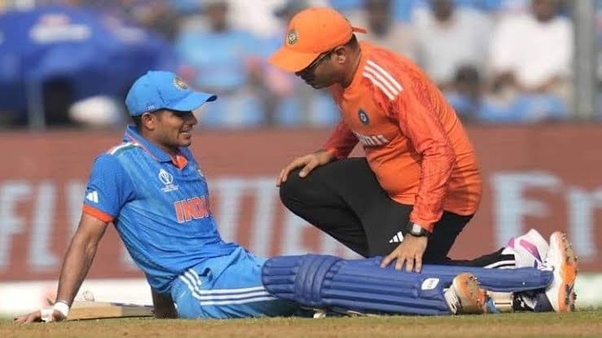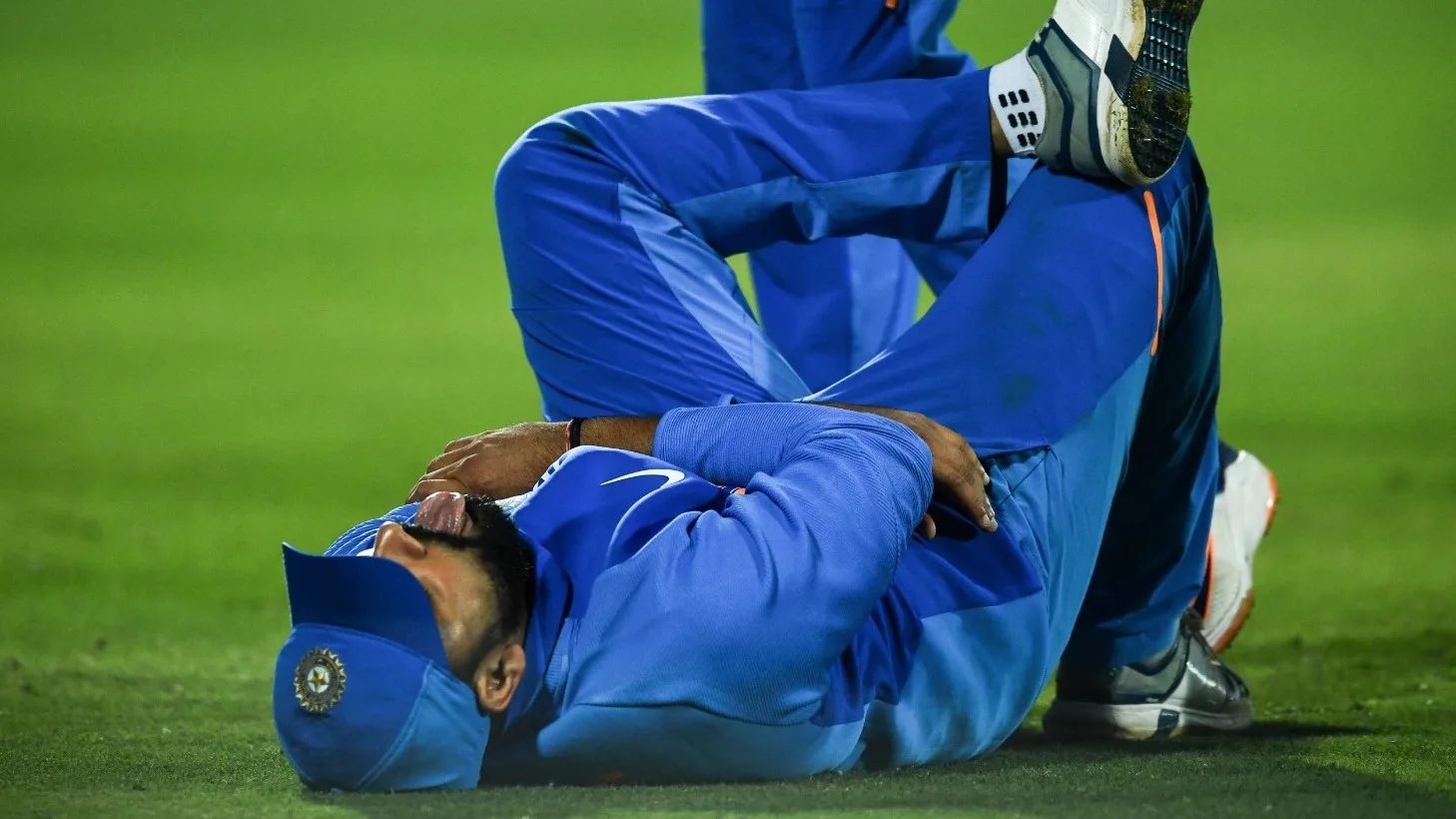Absent Hurt In Cricket
Introduction
“Absent hurt” is the cricketing way of saying that a batter can’t keep batting because of an injury he got while playing. Because of the loss of batting depth and the potential increased strain on other batsmen, this situation can have a major impact on a team’s strategy and performance. Fast deliveries, awkward landings, and collisions with fielding players are just a few ways that players can still hurt themselves while playing cricket, despite the sport’s reputation as a non-contact activity.
Absent Hurt Meaning

The batting lineup of a cricket team is the order in which batsmen take the field to try to score runs. Whenever a batter is “absent hurt,” it means they’re out for the game owing to an injury. Batsmen are susceptible to this condition in the event that they are hit by a ball, fall while running between the wickets, or suffer from any other physical injury that may occur during the game.
The situation becomes more difficult for the team in the middle of the innings if a batter gets hurt and can’t bat any longer. If the injured player is a crucial batsman for the team, they may have to rethink their strategy. The total score of the match could also be affected if the team’s plan to score a high total or chase a target is thwarted.
Impact on the Team
When a player is absent hurt, the team faces several challenges:
- Reduced Batting Depth: With one batsman unable to bat, the team effectively loses a wicket without the chance to score runs from that position in the batting order. This puts pressure on the remaining batsmen to score more runs and make up for the loss.
- Psychological Effect: Seeing a teammate injured can affect the morale of the team. Players may become more cautious or hesitant, impacting their performance on the field.
- Strategic Adjustments: The team must quickly adapt to the new situation and adjust their strategy accordingly. This may involve reshuffling the batting order, adjusting the pace of scoring, or taking additional risks.
Instances of Absent Hurt in Cricket
Throughout cricket history, there have been instances where no injuries were reported. Players have been hurt or hit by deliveries so many times that they can’t finish their innings. Protective gear like helmets, pads, and gloves are essential for batsmen, especially against fast bowlers who can produce tremendous velocity.
During India and Australia’s 2014 Test series, there was one major incident involving absent injured. Australian pacer Mitchell Johnson hit Indian batsman Shikhar Dhawan on the arm with a fast delivery, causing him to retire hurt. This changed the game-plan for India and affected their batting order.
Absent Hurt In Cricket: Managing Situations
During games, medical personnel from various teams are usually present to evaluate and treat any injured players. If a batter is out for the game due to injury, the team doctor or physiotherapist will assess the situation and decide when the batter can come back.
Batsmen who are out with injuries can, according to cricket rules, come back into the game later on in the innings if they are well enough to do so. Because it could affect the team’s prospects of winning the match, this decision can be crucial.
Preventing Injuries in Cricket
To reduce the likelihood of players becoming absent hurt, teams and governing bodies take measures to ensure player safety:
- Protective Equipment: Players are required to wear protective gear such as helmets, pads, and gloves to minimize the risk of injury from fast deliveries or accidental collisions.
- Coaching and Training: Coaches emphasize proper technique and safety measures in batting, fielding, and running between the wickets. This helps players minimize the risk of injury during play.
- Rules and Regulations: Cricket’s governing bodies continuously review and update rules to enhance player safety, such as regulations on the use of protective gear and limitations on dangerous bowling actions.
“Absent hurt” is a term that highlights the risks cricket players face during a match. While cricket is generally considered a safe sport, injuries can occur due to various factors, affecting the performance and strategy of a team. Teams must be prepared to adapt to such situations and take measures to prevent injuries whenever possible.
Cricket governing bodies, coaches, and players work together to ensure the sport remains safe and enjoyable for all participants. With ongoing efforts to improve player safety and mitigate risks, cricket can continue to thrive as a global sport enjoyed by millions.
Absent Hurt In Cricket: Notable Examples

- Gary Kirsten’s Broken Nose (1994)South African opener Gary Kirsten endured a severe injury during a 1994 Test match between England and South Africa at Lord’s. Englishman Devon Malcolm broke Kirsten’s nose with a swift delivery. Kirsten left the field to get medical treatment after retiring due to an injury. In a remarkable display of perseverance, Kirsten came back to bat later in the innings, despite his injuries. His return showed his resolve and tenacity, although his absence hampered South Africa’s first innings.
- Shikhar Dhawan’s Hand Injury (2014)During the 2014 Test series between India and England, Indian opener Shikhar Dhawan suffered a hand injury. Dhawan was struck by a fast delivery from English pacer Stuart Broad, causing discomfort and forcing him to retire hurt. Dhawan’s absence left India without one of their key batsmen at the top of the order, impacting their innings. He was later able to return to bat, but his injury highlighted the vulnerability of batsmen against fast bowlers.
- Ricky Ponting’s Broken Hand (2006)In the 2006 Ashes series between Australia and England, Australian captain Ricky Ponting suffered a hand injury. He was hit by a delivery from England’s Steve Harmison during the third Test at the WACA. Ponting retired hurt and did not return to bat in the first innings, affecting Australia’s batting performance. His injury was a significant blow to the team, but he managed to play in subsequent matches.
- Usman Khawaja’s Hamstring Injury (2015)During the 2015-16 Test series between Australia and New Zealand, Australian batsman Usman Khawaja suffered a hamstring injury while fielding. Khawaja was unable to bat in the second innings, resulting in him being marked as absent hurt. His absence left Australia without a key middle-order batsman and added pressure on the remaining batsmen to score the required runs.
- Mark Boucher’s Eye Injury (2012)South African wicketkeeper-batsman Mark Boucher experienced a career-ending injury during a warm-up match against Somerset in 2012. Boucher was struck in the eye by a bail that dislodged after a delivery hit the stumps. The injury required surgery, and Boucher announced his retirement shortly afterward. While this incident was not part of an official international match, it serves as a reminder of the potential dangers cricketers face.
The most high-profile cases of absent injury in cricket serve as a reminder of the dangers that players confront on the field. Cricket players’ bravery and perseverance are on full display in these instances, since they frequently choose to bat again after suffering injuries. Batting depth, morale, and general strategy may all take a hit when key players are out with injuries.
Absent Hurt In Cricket: Tragic Incidents

Although cricket is often thought of as a risk-free sport, it does have its share of hazards. Tragic accidents have happened in cricket history, leading to significant injuries or deaths, although they are rare. These occurrences serve as a stark reminder of the risks that gamers may encounter when playing a game. Some terrible cricket-related mishaps with absent wounded include as follows:
1. Phillip Hughes’ Fatal Injury (2014)
In November 2014, during a Sheffield Shield match, one of the most horrific events in cricket history happened when a bouncer hit Australian batsman Phillip Hughes on the neck. Hughes was hit on the exposed region beneath his helmet by the delivery delivered by Sean Abbott. After passing out on the field, Hughes was taken to the hospital in a hurry and later had surgery to repair a brain hemorrhage. Hughes died two days after medical intervention. The cricketing world was devastated by his death, which prompted a reassessment of player safety procedures. As a result, helmet design was improved and neck guards were introduced.
2. Raman Lamba’s Fatal Injury (1998)
In a 1998 local match in Bangladesh, former Indian cricketer Raman Lamba tragically lost his life while playing for Abahani Krira Chakra. As Lamba fielded at short leg, a strong shot hit him in the head. At that moment, he was not donning a helmet. Lamba had surgery to repair damage to his brain after being transported to the hospital. Regrettably, three days later, he died. It is crucial to wear protective gear when fielding near the batsman, as this unfortunate incident demonstrated.
3. Wasim Raja’s Death During a Cricket Match (2006)
The 2006 England veterans’ cricket match was the tragic end for Pakistani cricketer Wasim Raja. It was nevertheless a terrible event, even though his death had nothing to do with a game-related injury. Raja had a heart attack and passed out on the field; no one was able to bring him back to consciousness. Fans and fellow players all across the world were devastated by his unexpected passing while playing cricket.
The unfortunate incidents that have taken the lives of Phillip Hughes and Raman Lamba highlight the serious risks involved in the sport of cricket. To better safeguard gamers and forestall future catastrophes of this kind, these occurrences have spurred substantial modifications to safety protocols.
FAQs
In cricket, what is Absent Hurt?
A batsman is out for the count if he or she is too sick or injured to even step foot on the pitch, let alone bat against a ball. Here, neither the (innings-not-outs) nor his career statistics will be affected by the addition of runs, therefore neither will this average.
Does absent hurt count as a wicket?
For statistical reasons, a batter who leaves the field due to an injury and does not come back to bat by the end of the inning is not out. However, because replacement batters cannot bat, their absence has the same effect on the game as if they had retired out.
What is an example of absent hurt?
The score card will indicate “absent hurt” if a player, especially a batter, has an injury while batting and does not return to continue their innings.
What is meant by retired hurt?
Batsman ‘Retired Out,’ a dismissal, is recorded. They will not be able to come back when their innings are over. Batters are considered retired hurt when they are unable to continue playing because of an injury or illness. After they’ve healed and gotten the green light from the other captain, they can come back to bat at a later time.




